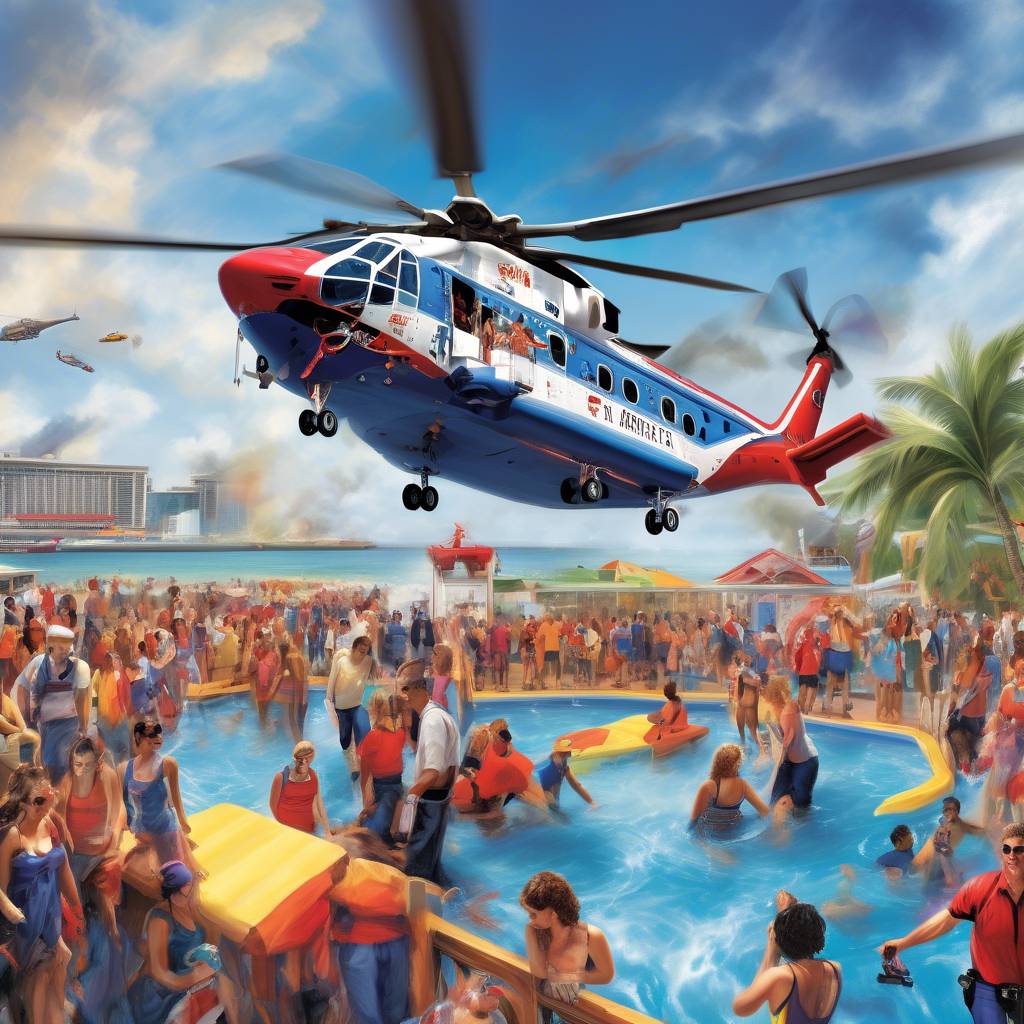A mother and her child were airlifted from a Carnival Cruise Line ship in a dramatic Air Force rescue. The rescue involved two HH-60G Pave Hawk helicopters, two HC-130J Combat King 11 aircraft, and two teams of combat rescue officers and pararescuemen from Patrick Space Force Base. The mission took place 350 nautical miles off the U.S. eastern coast, requiring three air-to-air refuelings to reach the ship, which had set sail from Port Canaveral, Florida, for a 10-day cruise to the Bahamas and Caribbean. Dramatic photos show the woman and her son being hoisted up into the helicopter from the ship’s deck, and the patient was successfully transferred to a hospital in the United States after more than 1,200 miles flown and 8 hours on the mission.
The nature of the medical emergency that led to the mother and child being airlifted from the Carnival Cruise Line ship was not immediately clear, and Carnival Cruise Line has not yet provided a comment. The mission was completed when all aircraft involved in the rescue returned to Patrick Space Force Base. Lt. Col. John Lowe, commander of the rescue group, praised the mission as an example of being “ready now,” highlighting how hours of training prepared the team for real-world missions like this one. He emphasized the importance of each member of the team understanding their role in the bigger picture, leading to the successful completion of the rescue operation without hesitation.
The rescue from the Carnival Cruise Line ship by the Air Force involved a significant effort and coordination, with multiple aircraft and teams of rescue officers and pararescuemen working together to airlift the mother and child in crisis. The rescue mission highlights the importance of preparedness and training for such operations, showcasing the dedication and expertise of the rescue team in responding to emergencies at sea. It also illustrates the importance of having swift and effective response capabilities in place for unexpected medical emergencies that may arise on cruise ships or other vessels.
The successful completion of the rescue mission by the Air Force from the Carnival Cruise Line ship demonstrates the readiness and professionalism of the rescue team in responding to emergencies at sea. The swift and coordinated efforts of the HH-60G Pave Hawk helicopters, HC-130J Combat King 11 aircraft, and combat rescue officers and pararescuemen led to the safe transfer of the mother and child to a hospital in the United States. The mission serves as a reminder of the critical role that trained and experienced rescue teams play in ensuring the safety and well-being of individuals in crisis situations, especially in remote or challenging environments such as the open sea.
The rescue operation from the Carnival Cruise Line ship by the Air Force showcases the dedication and commitment of the rescue team to ensuring the safety and well-being of individuals in crisis situations. The successful completion of the mission, despite the challenging conditions and distance involved, highlights the importance of preparedness, training, and collaboration in responding to emergencies at sea. The rescue team’s ability to plan and execute the mission without hesitation speaks to their professionalism and expertise in conducting complex operations in remote locations, ultimately saving lives and ensuring the successful outcome of the rescue operation.
Overall, the dramatic rescue of a mother and child from the Carnival Cruise Line ship by the Air Force serves as a powerful example of the vital role that trained rescue teams play in responding to emergencies at sea. The successful completion of the mission, with the safe transfer of the individuals in crisis to a hospital in the United States, underscores the importance of readiness, coordination, and expertise in conducting high-risk operations in challenging environments. The rescue operation highlights the dedication and professionalism of the rescue team in fulfilling their mission of saving lives and ensuring the safety of individuals in need, showcasing their ability to execute complex operations with precision and efficiency.









